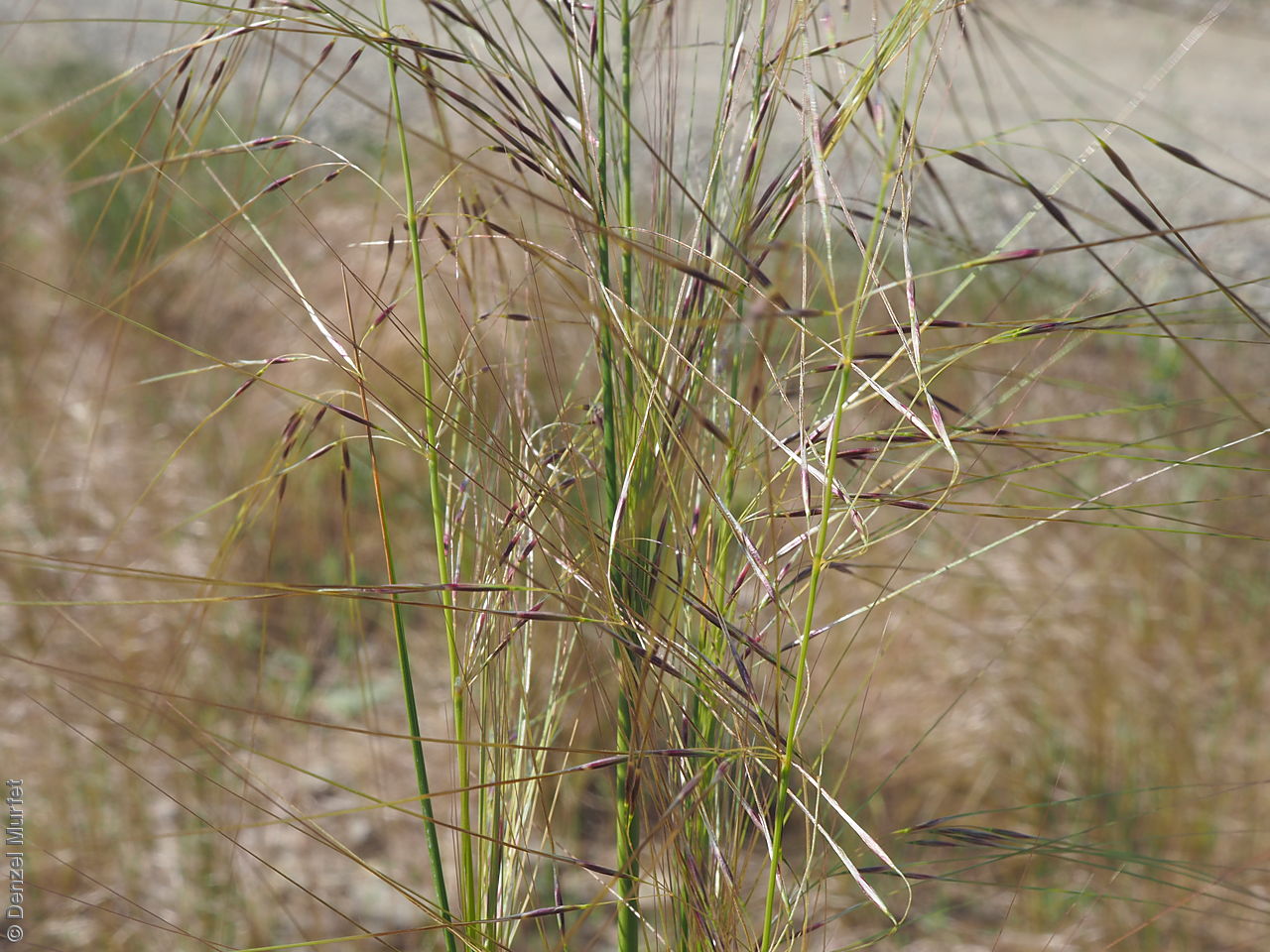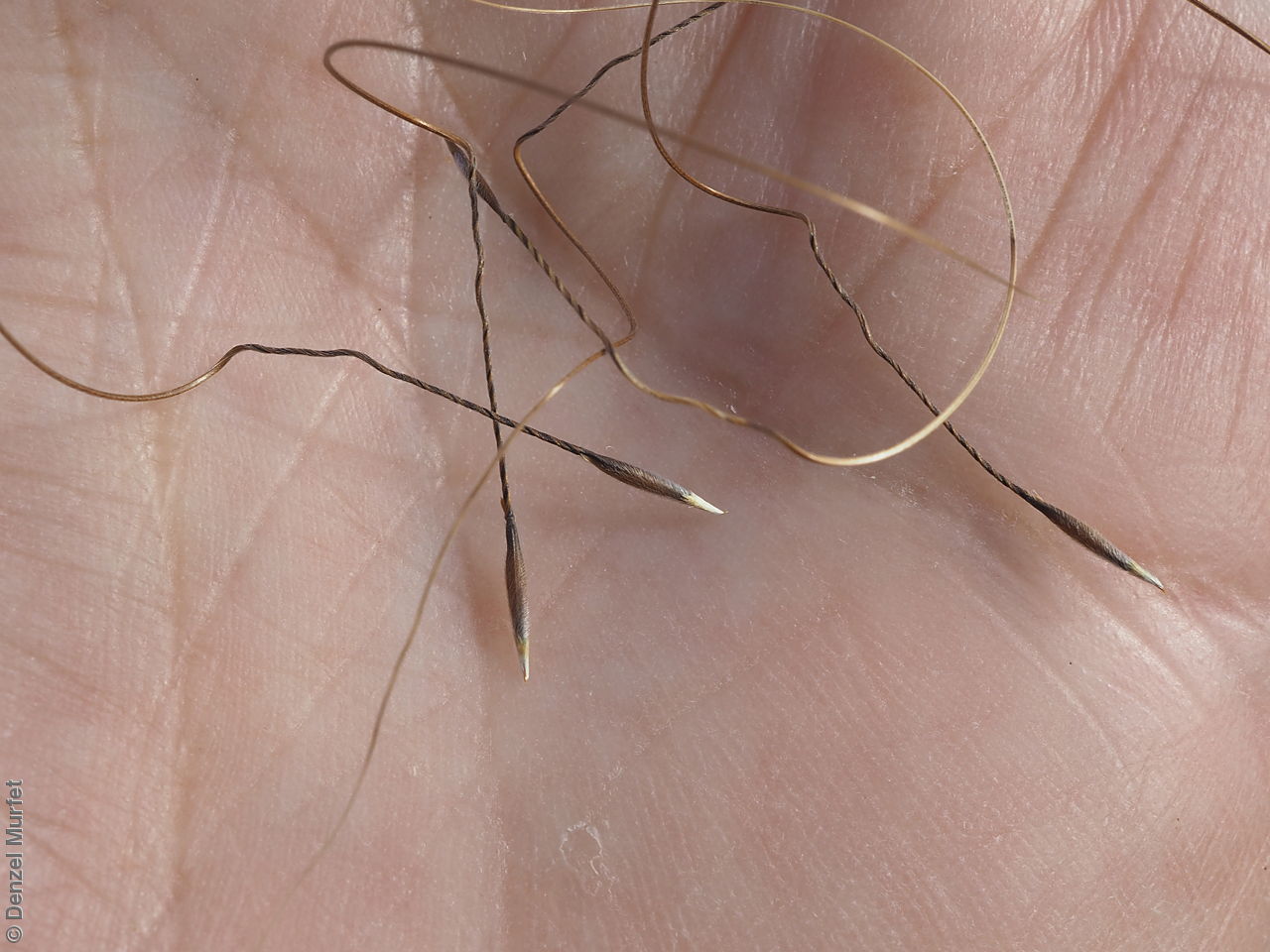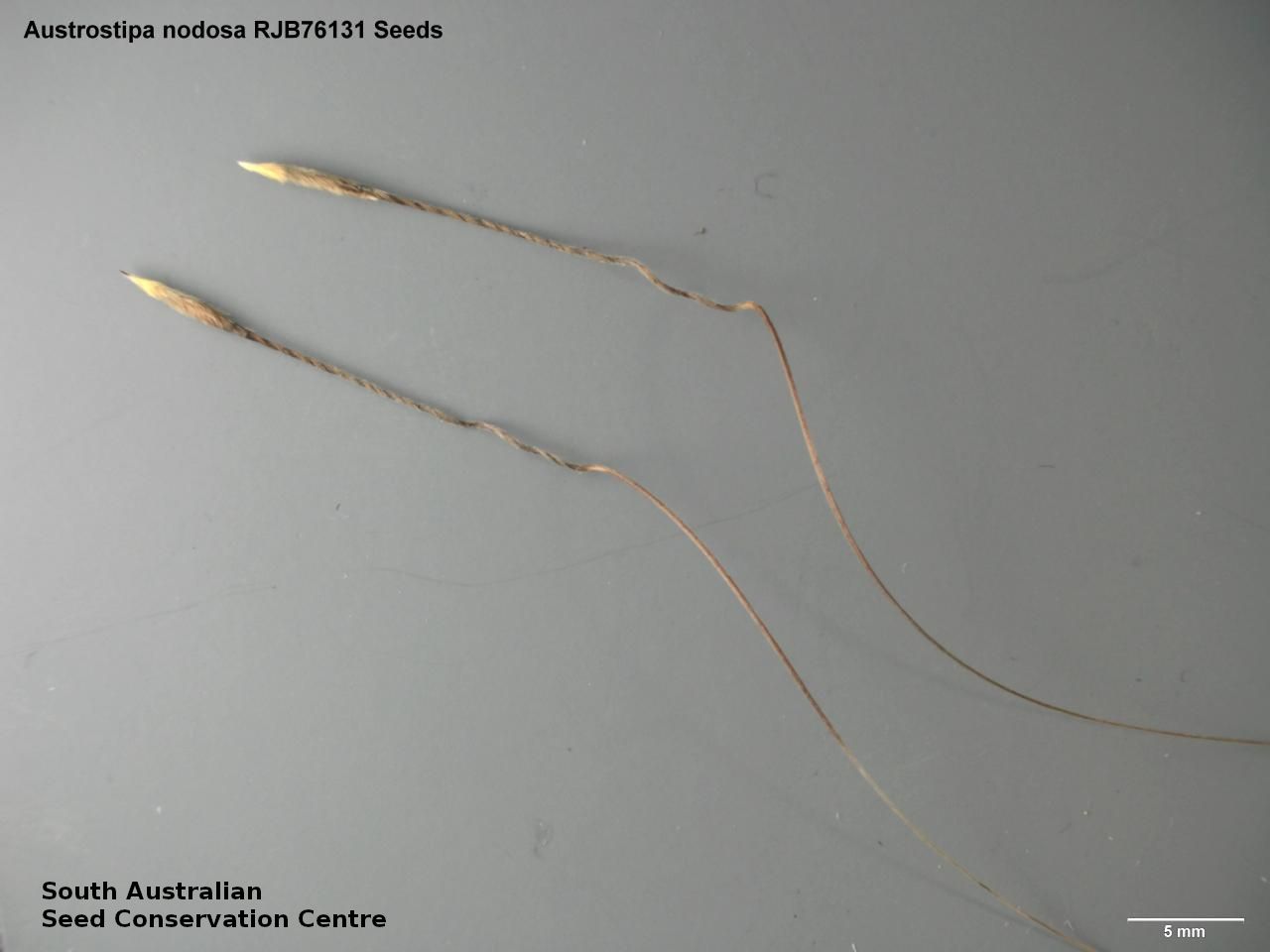

























Botanical art
Prior names
Stipa effusa
Stipa falcata var. minor
Stipa nodosa
Common names
Knotty Spear-grass
Tall Spear-grass
Etymology
Austrostipa from the Latin 'auster' meaning south and the genus Stipa, referring to the genus being allied to Stipa but restricted to Australia. Nodosa from the Latin 'nodus' meaning knot and the suffix '-osa'' meaning abundance, referring to its culms having more conspicuous nodes than on related species.
Distribution and status
Found in the south-eastern part of South Australia growing in a variety of habitats and soil types. Also found in all States except in the Northern Territory. Native Common in South Australia. Uncommon in Queensland. Common in the other states.
Herbarium regions: North Western, Lake Eyre, Gairdner-Torrens, Flinders Ranges, Eastern, Eyre Peninsula, Northern Lofty, Murray, Yorke Peninsula, Southern Lofty, Kangaroo Island, South Eastern, Green Adelaide
NRM regions: Adelaide and Mount Lofty Ranges, Alinytjara Wilurara, Eyre Peninsula, Kangaroo Island, Northern and Yorke, South Australian Arid Lands, South Australian Murray-Darling Basin, South East
AVH map: SA distribution map (external link)
Plant description
Loosely tufted perennial grass to 90 cm high, with firm and rather stout, erect, usually glabrous culms ,but sometimes shortly scabrous nodes. Leaves scabrous or pubescent with blade rather stiff, flat or slightly inrolled to 30 cm long and 2 mm wide. Inflorescence a slender, open sparse panicle to 50 cm long, with purplish glumes to 15 mm long, usually remaining purplish until after lemma falls. Flowering between August and November.
Key to this species: awn falcate (curved bristle at right angle to the column); lemma narrow and needle-like, nodes exposed and conspicuous; leaves up culm with sheath 4.5-9 mm wide; panicle open, usually sparse; glume remaining purplish. Fruits are dark- brown to black slender lemma to 7 mm long, with a smooth surface covered in sparse white or yellowish hairs; callus long sharp to 3 mm long; awn falcate to 100 mm long with column slender, smooth with two-toned black and yellow spiralling bands. Seeds are yellow-brown narrow ellipsoid grain to 2.5 mm long within the lemma. Seed embryo type is lateral.
Seed collection and propagation
Collect seeds between October and December. Use your hands to gently strip the seeds (lemma) off the mature fruiting spike, those that are turning brown. Mature seeds will come off easily compare to the immature seeds that remain on the spike. Alternatively, you can break off the whole fruit spike to allow some of the seeds to mature further. Place the seeds/spike in a tray and leave to dry for two weeks. No further cleaning is required if only seed collected. If seed spikes collected, use hand to strip off the mature seeds. Store the seeds with a desiccant such as dried silica beads or dry rice, in an air tight container in a cool and dry place. Viability of grass seeds could be very viable, depending on time of seed collections and seasonal conditions.
| Location | No. of seeds (weight grams) | Number of plants | Date collected | Collection number Collection location | Date stored | % Viability | Storage temperature |
|---|---|---|---|---|---|---|---|
| BGA | 17,350 (34.7 g) | 100+ | 11-Nov-2003 | SMK55 Southern Lofty | 14-Aug-2006 | N/C | -18°C |
| BGA | 6,380 (12.76 g) | 100+ | 14-Nov-2003 | SMK56 Southern Lofty | 14-Aug-2006 | N/C | -18°C |
| BGA MSB | 7,127 (14.25 g) 7,127 (14.25 g) | 100+ | 7-Nov-2003 | SMK54 Southern Lofty | 14-Aug-2006 | N/C | -18°C |
| BGA | 7,000 (22.07 g) | 100+ | 25-Nov-2010 | DJD2057 Murray | 1-Jan-2012 | 100% | -18°C |
| BGA | 2,900 (6.82 g) | 9 | 6-Jan-2017 | KHB916 South Eastern | 30-Jun-2018 | 100% | -18°C |
Number of plants: This is the number of plants from which the seeds were collected.
Collection location: The Herbarium of South Australia's region name.
% Viability: Percentage of filled healthy seeds determined by a cut test or x-ray.